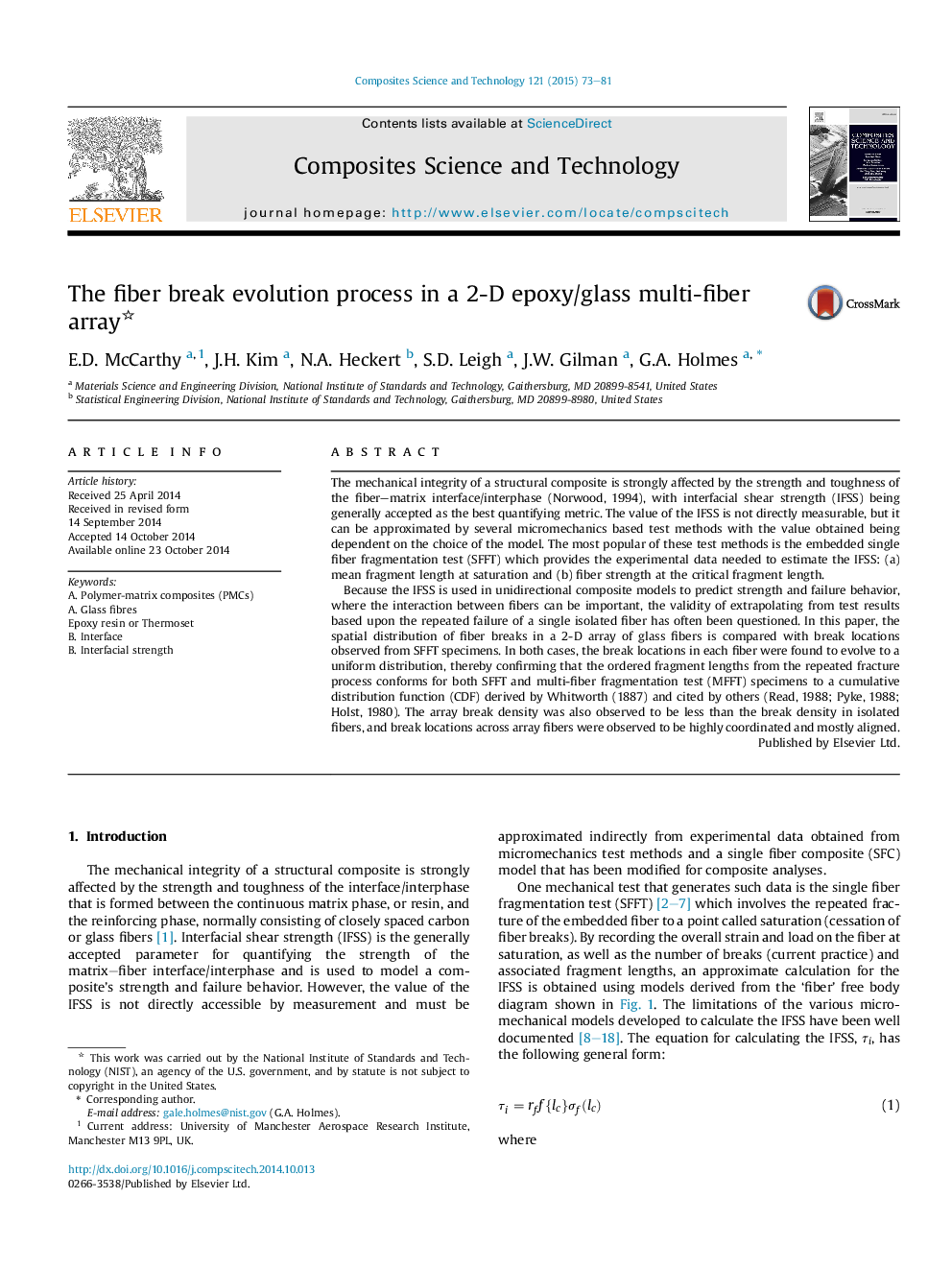| کد مقاله | کد نشریه | سال انتشار | مقاله انگلیسی | نسخه تمام متن |
|---|---|---|---|---|
| 820010 | 1469504 | 2015 | 9 صفحه PDF | دانلود رایگان |
The mechanical integrity of a structural composite is strongly affected by the strength and toughness of the fiber–matrix interface/interphase (Norwood, 1994), with interfacial shear strength (IFSS) being generally accepted as the best quantifying metric. The value of the IFSS is not directly measurable, but it can be approximated by several micromechanics based test methods with the value obtained being dependent on the choice of the model. The most popular of these test methods is the embedded single fiber fragmentation test (SFFT) which provides the experimental data needed to estimate the IFSS: (a) mean fragment length at saturation and (b) fiber strength at the critical fragment length.Because the IFSS is used in unidirectional composite models to predict strength and failure behavior, where the interaction between fibers can be important, the validity of extrapolating from test results based upon the repeated failure of a single isolated fiber has often been questioned. In this paper, the spatial distribution of fiber breaks in a 2-D array of glass fibers is compared with break locations observed from SFFT specimens. In both cases, the break locations in each fiber were found to evolve to a uniform distribution, thereby confirming that the ordered fragment lengths from the repeated fracture process conforms for both SFFT and multi-fiber fragmentation test (MFFT) specimens to a cumulative distribution function (CDF) derived by Whitworth (1887) and cited by others (Read, 1988; Pyke, 1988; Holst, 1980). The array break density was also observed to be less than the break density in isolated fibers, and break locations across array fibers were observed to be highly coordinated and mostly aligned.
Journal: Composites Science and Technology - Volume 121, 16 December 2015, Pages 73–81
